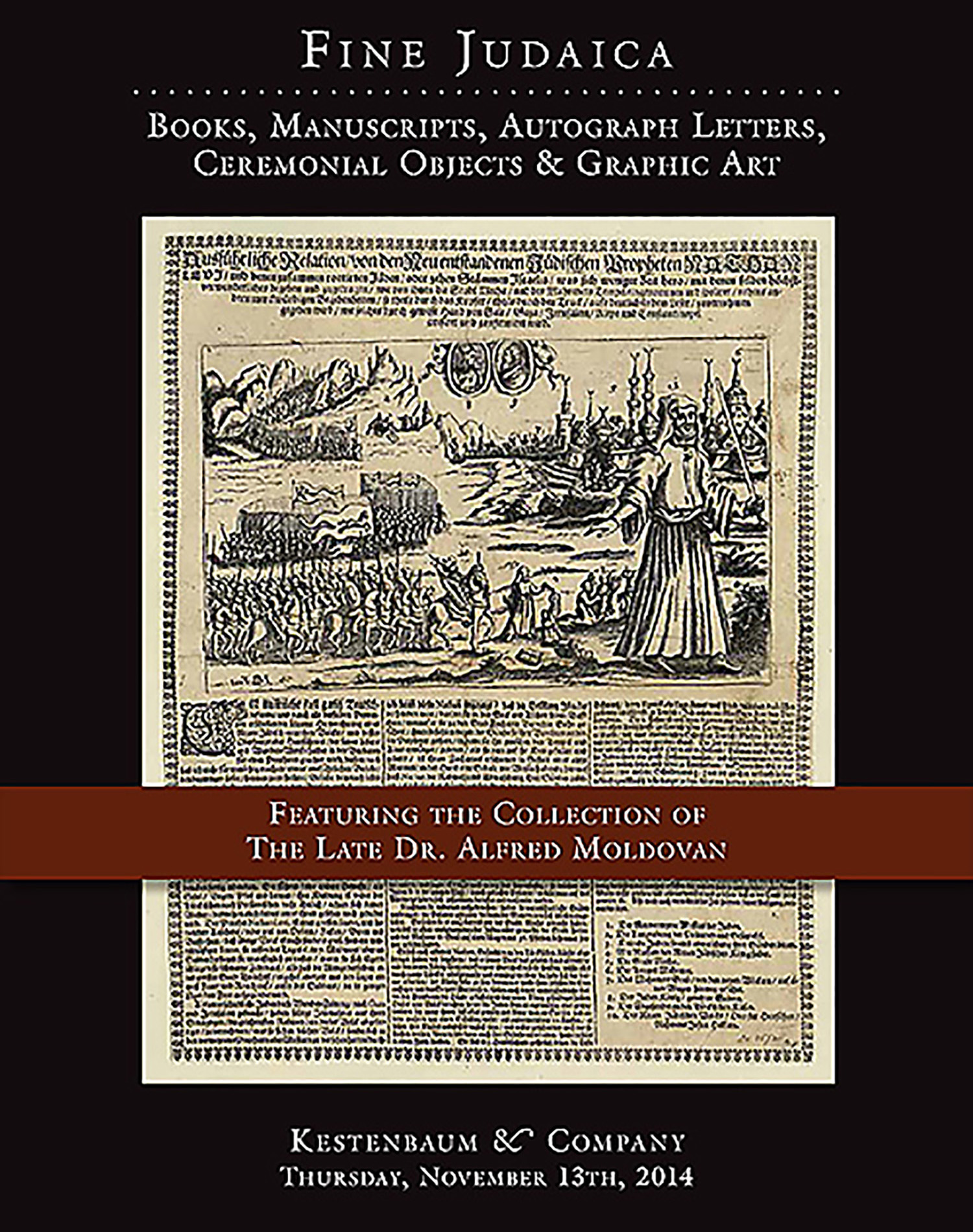Marriage Contract. Manuscript in Hebrew and Judeo-Persian on paper. Uniting Ezra the son of David and Bat-Zion daughter of Hai HaKohen.

AUCTION 63 |
Thursday, November 13th,
2014 at 1:00
Fine Judaica: Books, Manuscripts, Autograph Letters, Graphic and Ceremonial Art
Lot 293
(KETHUBAH).
Marriage Contract. Manuscript in Hebrew and Judeo-Persian on paper. Uniting Ezra the son of David and Bat-Zion daughter of Hai HaKohen.
Yazd, (Persia): 26th Av 1914
Est: $500 - $700
Whereas in general Persian kethuboth employed rabbinic script, Prof. Shalom Sabar has pointed out that the community of Yazd differed in this respect, employing square Hebrew characters. (See Sabar, Ketubbah, p. 328.) The standard text of the kethubah is written here in the customary Aramaic, while the few lines of the addendum (or tosepheth kethubah) at the bottom in a cursive script are in Judeo-Persian (cf. Sabar, no. 228.) Surrounding the entire text we see (though faded) mauve and green floral motifs.
Yazd, is an ancient city in central Iran (170 miles southeast of Isfahan) and a center of Zoroastrian culture probably built by Yazdegerd I (399–420). That Yazd was also a center of Jewish scholarship in the early Middle Ages is attested by a ninth-century Hebrew manuscript of the Later Prophets with masoretic notes which was found there, one of the oldest known Biblical manuscripts composed by Persian Jews. In 1948 there were about 1,000 Jews resident in Yazd, following the 1979 Islamic revolution only five families remained (Jewish Virtual Library).
